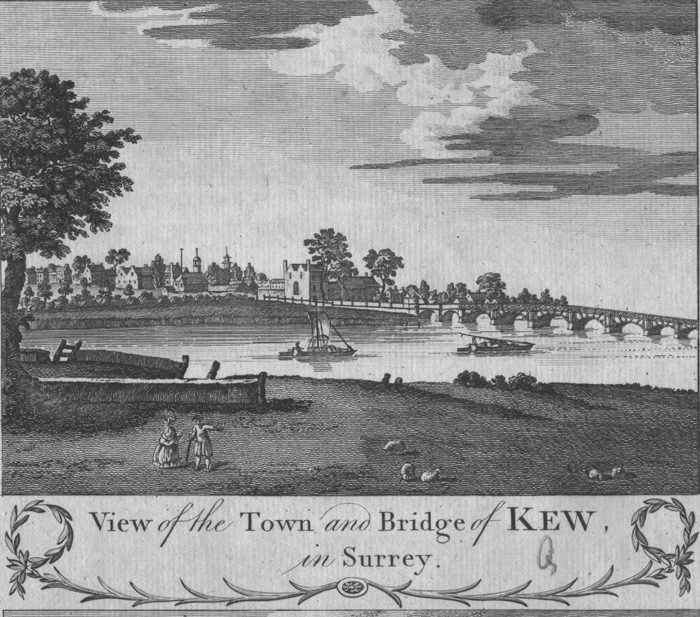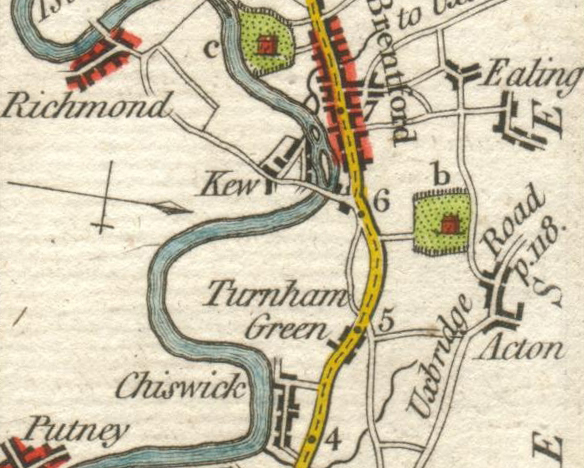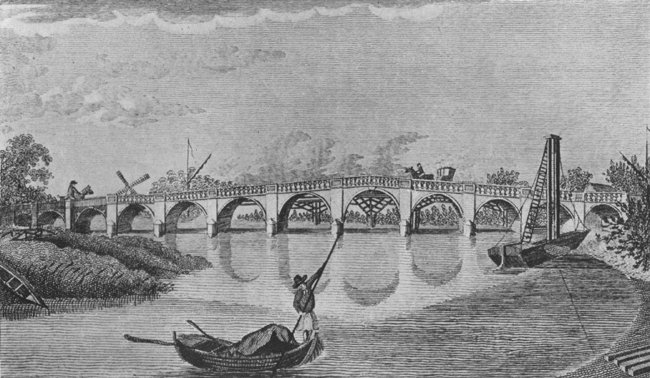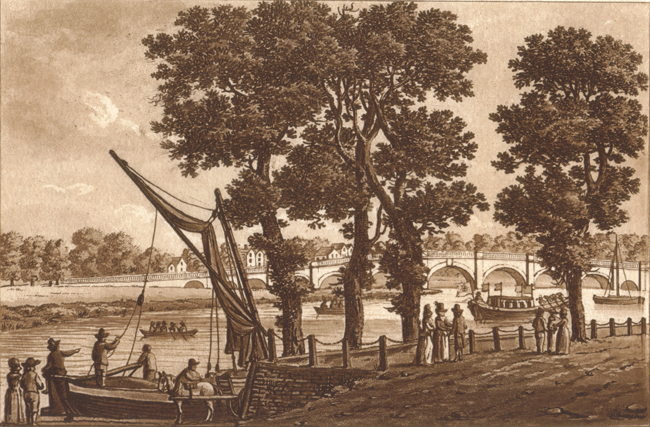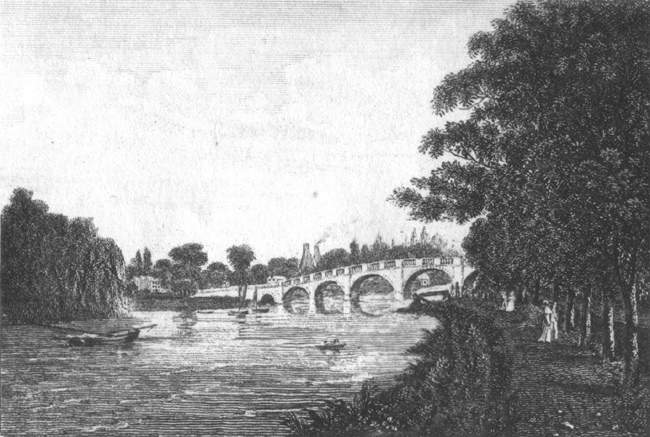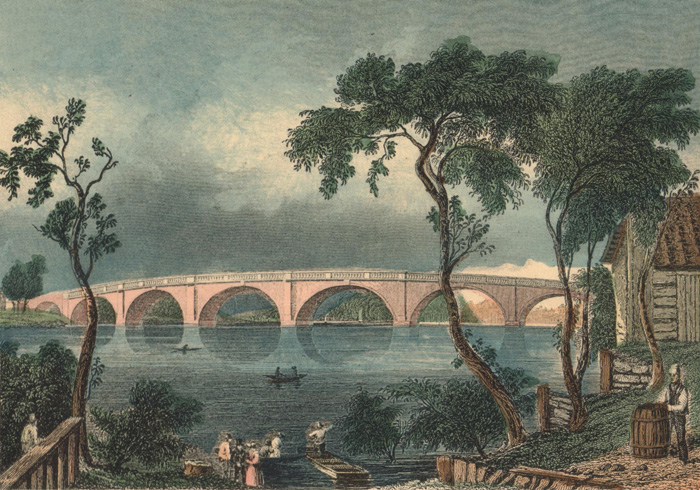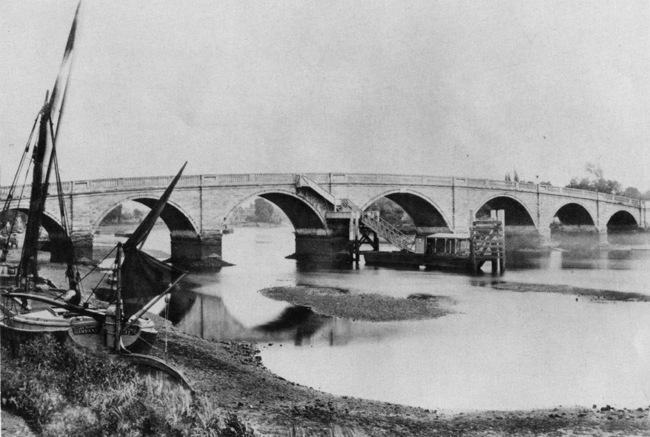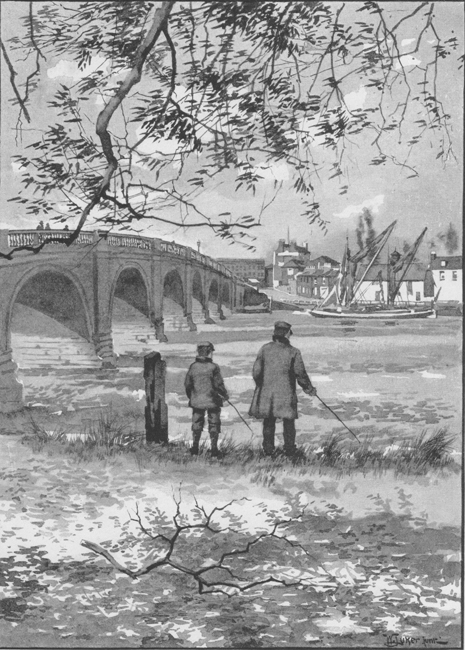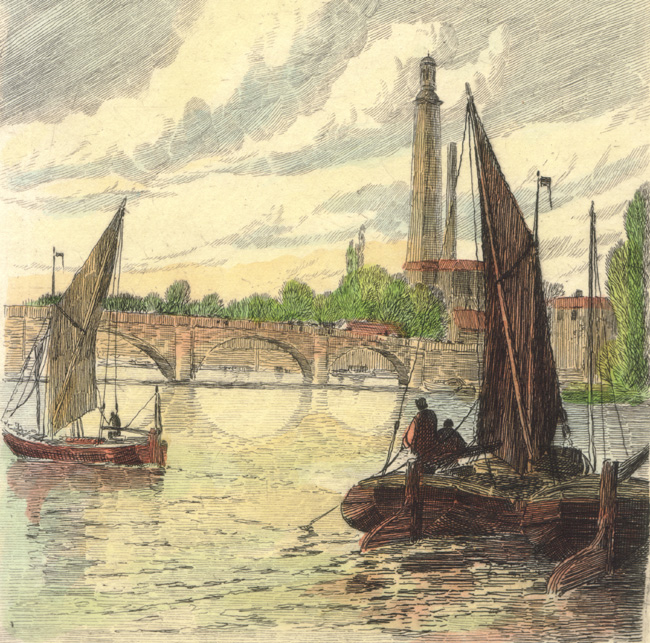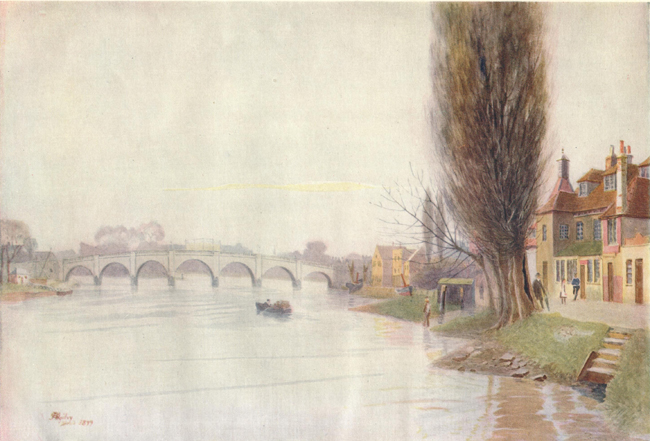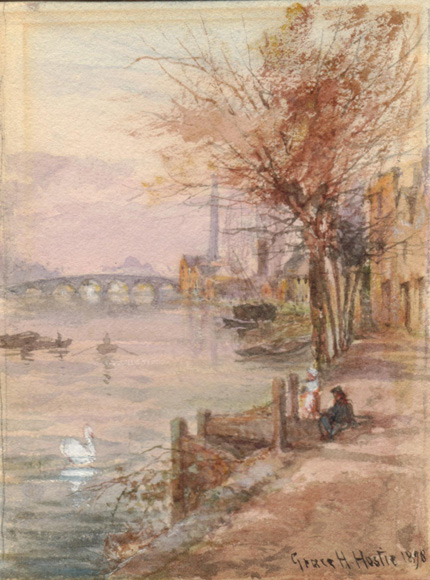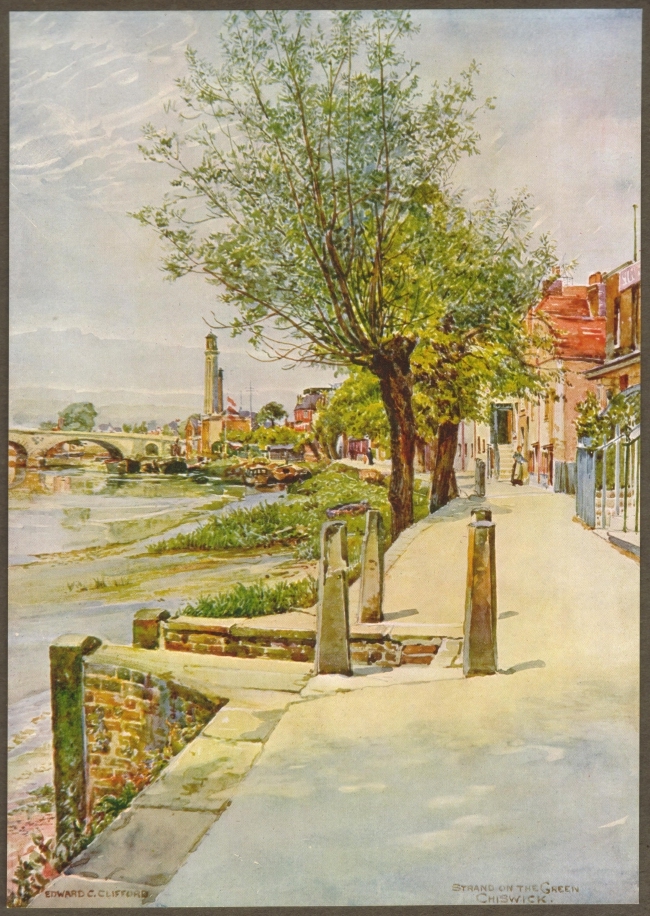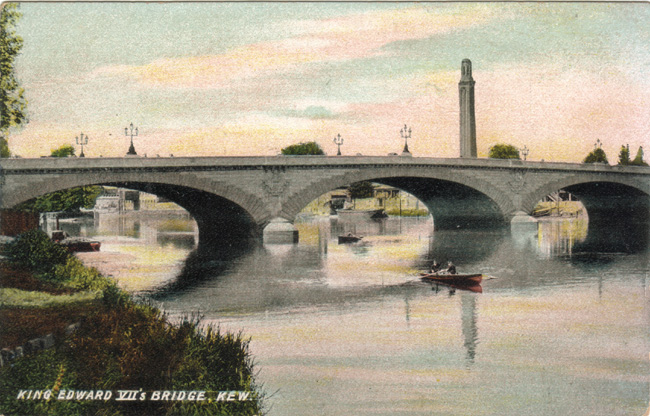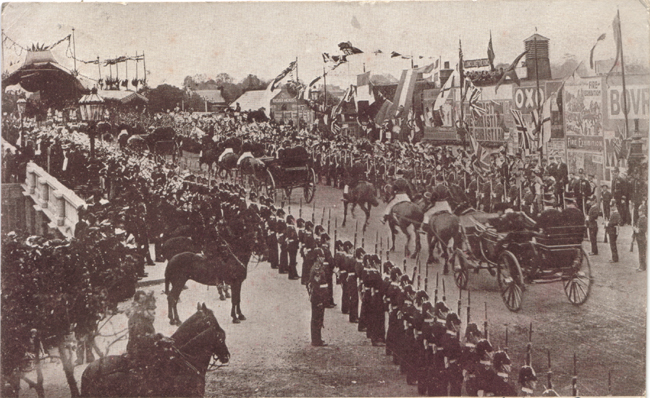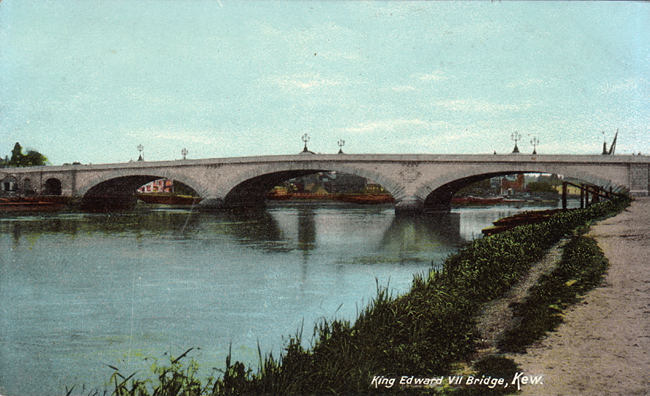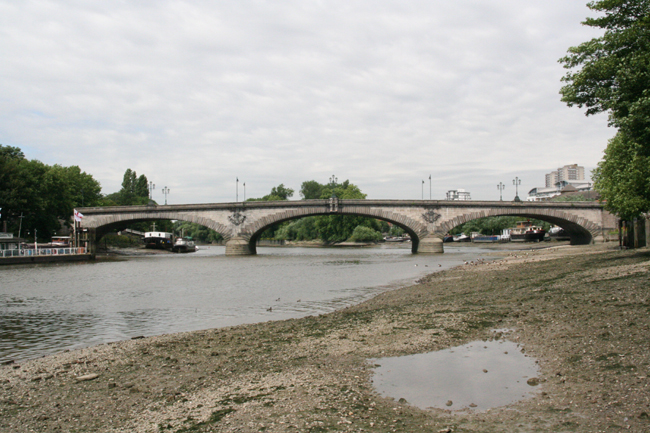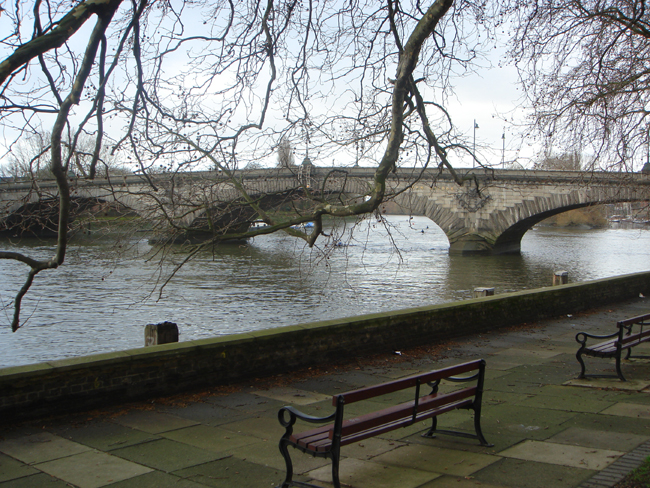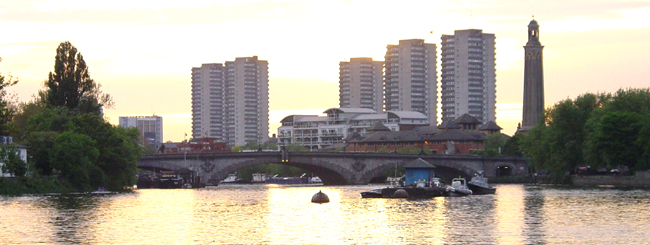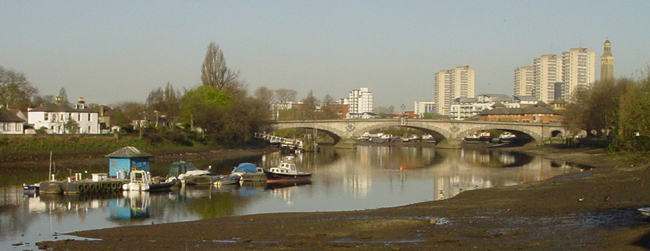
In 1757 an Act of Parliament was passed to allow Tunstall to build a bridge linking Brentford in Middlesex with Kew in Surrey. It was intended to run along the route of the King's Ferry but local objections relocated it to the line of the foot ferry. A new Act was required and in 1758 Tunstall commissioned John Barnard, master carpenter on a proposed wooden bridge at Westminster, to design Kew Bridge. Construction began in April 1758. The bridge had eleven arches, two at each end were of stone joined by seven wooden arches across the main span of the river. As the builder and ferry owner Tunstall was allowed to charge tolls to cross - from a halfpenny for pedestrians up to one shilling and sixpence for a coach and four horses. In today's money that would be about 30p on foot and £10 for a coach and four. The bridge was dedicated to George, Prince of Wales and his mother Augusta. The Prince inaugurated the bridge on 1 June 1759, driving across it with his mother. It opened to the public three days later on 4 June 1759. It is said that 3000 people crossed the bridge on the first day. That evening a banquet for local gentry was held in the Rose & Crown at Kew with a bonfire and illuminations on Kew Green. In the same year the Physic and Exotic Garden was founded in the grounds of Kew House, the start of the Royal Botanic Gardens.
The print at the top shows the bridge shortly after it was finished. It is probably taken from the south bank of the Thames and shows Strand on the Green through the arches.
